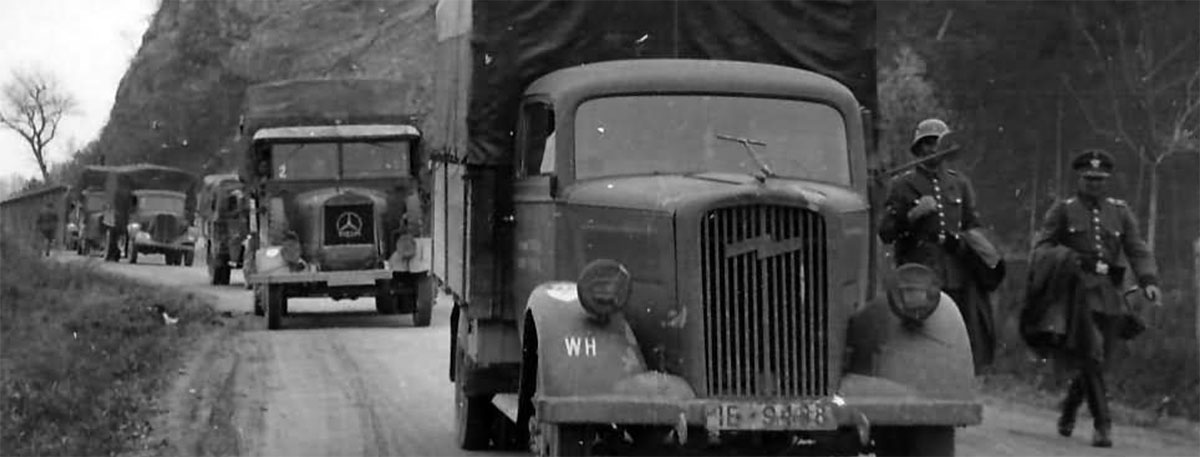Dongo, The history
The story of Dongo, from the Romans to the Medeghino Pirate, to the Capture of Benito Mussolini
The economic importance of the area was well known in antiquity and it was mainly due to the road that leads to S. Jorio Pass, which connects the lake of Como and the valley of Bellinzona, in Swiss territory, and from there to Germany. The importance of this crossing point can not be escaped to the Romans, too, especially when barbarians tribes coming from beyond the Alps and the Swiss Grison land, urged to invade Lombardy.
These northern peoples were offered three possible ways to come down to Italy, but the most direct was through the S. Jorio pass and Lake of Como.
In the most ancient road maps, S. Jorio pass is referred to as Jori or Giori, and it is therefore very likely that the pass derived the name from Jovis or Jovius, which is highly probable either because of the widespread cult of Jupiter in the area of Como and Ticino, or because of the religious custom of the Romans, which lasted until the beginning of the V century, of placing statues, small temples and votive altars pro itu et reditu at the most salient points of the roads.
The dedication to San Jorio should have happened at the advent of Christianity, and to those who were passing along this road must not have been difficult to raise their thoughts no more to Jupiter, but to St. Giovio or Jorio, so that on that pass at the foot of the Alps was erected a chapel which although modified over time, still exists today dedicated to this new Saint.
To prove the Roman spirit of this Pre- Alpine pass someone would say that the name of Stazzona, a large Municipality placed along the road, right at where it starts entering into the valley, came from the Roman Statio, which is to say a watch place set in a strategic point which was built to hinder a possible invasion through the pass from the Leponzi tribes (an alpine people that inhabited the zone at the foot of the central Alps); just like the other Stazzona placed in Valtellina the Roman built to hinder a possible Raethy’s invasion.
San Jorio Pass is reachable either from Dongo through Stazzona or from Gravedona through Garzeno. The two valleys are separated only by a roundish hump of Mount Cortafo, which just before reaching the Pass lowers to firm a wide saddle where the two roads join for the last hundreds meters. This wide saddle is called Giovio and it is therefore easy to recognize in this name the jugum of the roman roads.
Since the XV century, the iron mines of the valley had been exploited to produce cast iron; but in the XIX centuries, the production came to an end because it proved no to be convenient any more, mainly due do the high cost of transportation.
In the past, these iron- mines had been object of great battles, especially during the bloody and everlasting fights between France and Spain for the succession to the Dukedom of Milan. As a matter of facts, in 1508 the iron mines of Dongo had been sold to Marshall Gian Giacomo Trivulzio of the French side, who immediately forbade the entrance to Antonio the Crazy, who was the leader of the against-French side. Indeed, he was a very peculiar man, for he was a cruel and greedy pirate and highwayman born in Brenzio in the Parish of Dongo, where he was known as the Crazy; a nickname that was passed onto his sons that followed his deeds.
The historian Rebuschini wrote that in 1517, in the castle of Musso, was introduced “…with great expenses a fountain of running water together with the smith-workshops to cook the iron of the close-by mines, to reduce it to the uses of war... ”.
After the death of the Crazy and of his sons, another figure of ferocious corsair came to rule Dongo and the Three Parish: Gian Giacomo Medici nicknamed Medeghino, the black-sheep on a family of Saints as he was brother to a Pope and cousin to Saint Charles Borromeo.
The 27 April 1945, on t he road between Musso and Dongo, a Partisan division captured Benito Mussolini and his lover Claretta Petacci while they attempted to flee to Switzerland together with his Fascist ministers. The last had been immediately taken to Palazzo Manzi, the Town Hall, sentenced and executed, while Mussolini and Petacci were taken to Mezzegra where they passed their last night at Casa De Maria, to be executed the following morning, the 28th April 1945.
The Town Hall of Dongo hosts a multimedia Museum of these historical events.
